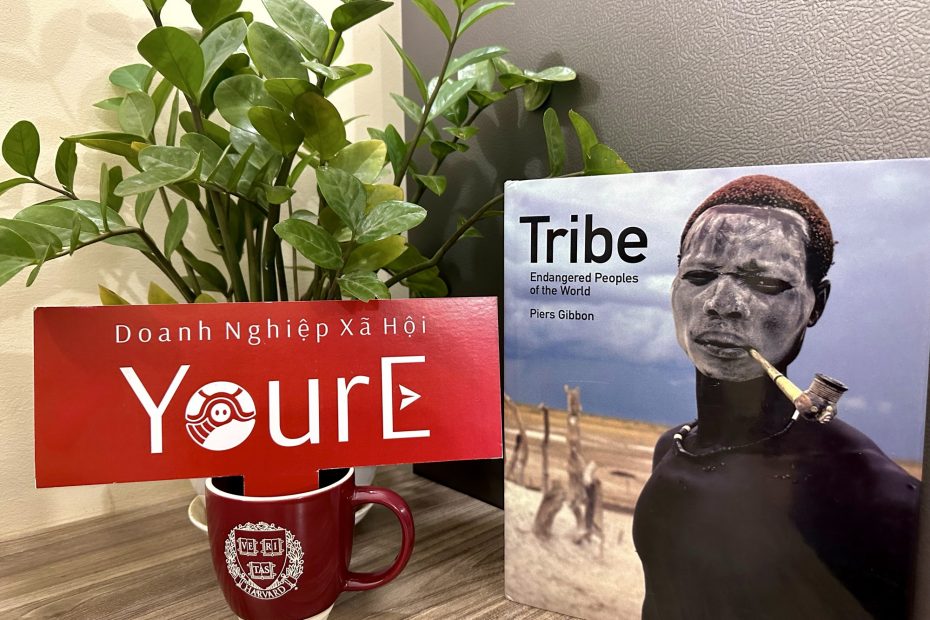A celebration of 200 of the world's indigenous peoples.
In words and beautiful photographs, Tribe explores the cultures, beliefs and societal patterns of human identity and belonging. Author Piers Gibbon describes some of the last existing tribal communities and shows them as intimate groups that are part of the wider world. We see their homes, celebrations and all that makes each tribe a unique thread in the fabric of humanity.
This comprehensive book details:
- Life stages from birth to death
- Learning, histories and how tribes interpret the world around them
- Belief systems
- Medicine, shamanism, prayer
- Survival skills
- Coming of age ceremonies
- Dress and adornment
- Sex, gender and relationships
- Money, trade and wealth
- Law and order
- Leisure, sport, music and art
- Outside contact now and in the past
- Tribal futuresThe book also corrects the notion that an aboriginal tribe is invariably cut off from the rest of the world. The author's personal interviews with the world's leading anthropologists explore the future of these tribes and examine what unmet need fuels our endless fascination with tribal societies .Tribe is an inspiring, eye-opening and sometimes poignant exploration of some of the least known and most endangered peoples of the world.
Review
Anthropologist Piers Gibbon estimates that the world population of tribal people is about 150 million. Tribe is a large-format book that surveys indigenous cultures around the globe, and is intended to be a celebration of this diversity. Thematic chapters of a variety of ethnic groups are presented: Food and Drink; Music, Dance, Leisure; House, Shelter, Home; and Belief, Ritual, Healthcare. Clothing and body adornment, food preparation, ceremonies, recreation, architecture, social structure, and many other elements of living are described in text and sidebars and accompanied by full- and partial-page photographs with captions. The last chapter, The Future, discusses the challenges for these indigenous communities, such as climate change, industry, tourism, and poverty. Tribe ends with a two-page list of resources for further exploration and a two-page index. (Lori D. Kranz American Reference Books Annual 2010 2011-03-01)
Gibbon is a Britain-based explorer who has been involved with numerous documentaries (including a recent one on headshrinking traditions of the Shuar people of Ecuador) and TV series (a six-part series on historical food) and also lectures on his experiences. This book offers a beautifully illustrated, accessible treatment of tribal people around the world. The material is organized thematically and covers food and drink, dress and adornment, shelter, courtship and marriage, music and dance (and leisure), social structures (and war and peace), beliefs and rituals, and the future. The text is substantial and respectful and is well balanced with the lavish visuals. The list of resources and further reading is selective and thematically organized, making it useful as a starting point for general readers and students. (Book News 2011-06-01)
Today there are over 150 million people belonging to endangered tribal groups around the world. In this large-format book, British author and frequent TV science host Gibbon travels the globe to explore over 200 of these indigenous groups and to offer insight into the alternative ways humanity approaches daily living in specific environments. The vivid photographs throughout, depicting personal adornment and dress, marriage rituals, hunting practices, food gathering, and tribal housing, together with brief ethnographic information, are the labor of many professionals who have spent years in the field among tribal peoples; Gibbon provides a 21st-century perspective on what remains of these cultures. He also includes information for further online research regarding travel, charities, and indigenous studies. A visually driven overview of many tribes that normally do not receive exposure in basic anthropology books.... Best suited for the lay anthropologist or reader of National
Geographic.
Today there are over 150 million people belonging to endangered tribal groups around the world. In this large-format book, British author and frequent TV science host Gibbon travels the globe to explore over 200 of these indigenous groups and to offer insight into the alternative ways humanity approaches daily living in specific environments. The vivid photographs throughout, depicting personal adornment and dress, marriage rituals, hunting practices, food gathering, and tribal housing, together with brief ethnographic information, are the labor of many professionals who have spent years in the field among tribal peoples; Gibbon provides a 21st-century perspective on what remains of these cultures. He also includes information for further online research regarding travel, charities, and indigenous studies. A visually driven overview of many tribes that normally do not receive exposure in basic anthropology books.... Best suited for the lay anthropologist or reader of National
Geographic. (Angela M. Forret Library Journal 2011-01-01)
About the Author
Piers Gibbon's human sciences thesis at Oxford became the basis for a documentary, Jungle Trip, which followed him to the Amazon, where he studied with shamans and took part in tribal activities of the Iquitos, Pucallpa and Matses tribes. He presented the six-part TV series Headshrinkers of the Amazon and has narrated more than 200 hours of documentary programming for Discovery Channel, Animal Planet, the BBC and National Geographic Channel.










